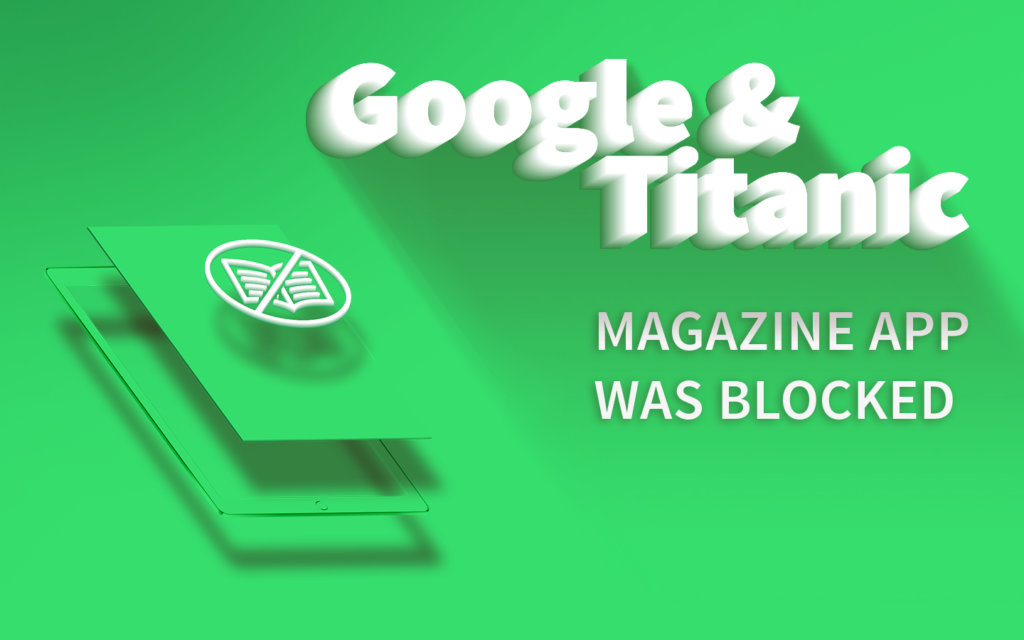What app providers should pay attention to before publishing
For app providers it is essential to be represented in the two major app stores in order to reliably reach their readers. Several factors can lead to an app being blocked. In the special case of the “Titanic” it was about content. According to media reports, Google classified some cover images of the “Titanic” as “too obscene”. The company exercised its right to strictly interpret its own app store guidelines and to block the app. Whether it is right or wrong, whether it’s an encroachment on the freedom of the press or rather Google just exercising responsibility is open for debate.
For us it is an occasion to take a closer look at the app store guidelines and requirements mentioned. Because it is actually not that simple to publish an app in the Google Play Store or the Apple App Store. In both stores you require not only a normal user account but also developer access. The app should meet certain minimum requirements such as offering functional added value and running stably. That may sound obvious at first. But it also means that the app must be able to run correctly on as many different devices as possible including older smartphones and tablets. If this is not the case, providers are expected to say so. Quite a programming challenge – and one of the reasons it is worth using a white label solution such as the PressMatrix one.
The minimum requirements can of course also be understood in terms of content: It can for example be a reason for rejection if the app only offers functions that another app already fulfills. Frequent repetitions in the text are also not welcomed by store operators and nor are those apps whose main function is to deliver advertising. Moreover, explanations and similar should be formulated in a clearly understandable manner.
From copyright to cost transparency
But back to the requirements: The content of the app is (naturally) subject to local law; the rights of third parties must not be infringed. The copyright applies to texts, images, videos and the functionality of the app. The protection of minors and the identification of age restrictions and releases must of course be considered. It is the provider who sets the age limit depending on the content offered. This can also be 0 years, but must be clearly communicated in any case. Google has developed the “Designed-for-Families” program for apps that are specifically intended for children and wants to ensure thereby that the advertising offers in these apps are more strictly controlled.
In addition, the app stores check whether the app sends its users unsolicited spam messages or contains misleading advertising. Both are reasons for a rejection. Incidentally, advertisements placed in the app are considered part of the app and are therefore also subject to the guidelines of the store. As long as the content of the advertising is suitable, the app operator is on the safe side. However, the stores are not happy when advertising leads the user directly to the operator’s offers outside the app, for example to the website. The aim of the stores is of course to offer the user additional offers within the app if possible. Whenever the user incurs costs – with magazine apps, these are primarily in-app purchases such as individual purchases or one-off and renewable subscriptions – it must be made clearly visible. Show additional costs transparently and justify them. List all prices and conditions not only within the app, but also in the store entry. Instead of selling issues as in-app purchases, as the provider you can of course also work with activation codes.
Data protection and tracking
Speaking of transparency: According to the General Data Protection Regulation (GDPR), app operators are obliged to inform their customers about what data the app collects and why, and what happens to the data. The user must give consent, but can revoke it at any time and can request information from the provider about the data collected. If you offer an app in the Apple store, this topic is particularly relevant right now. Apple has just changed its data protection requirements, so operators should update their information now.
As a provider of an app publishing solution, we naturally try to implement as many app store guidelines as possible for you with our software. With our service team, we support you in creating your app and publishing it in the app stores in accordance with the respective guidelines. If, as an app provider, you want to take advantage of the extensive reach of the large stores, there’s no way round it – you are obliged to accept their conditions.

